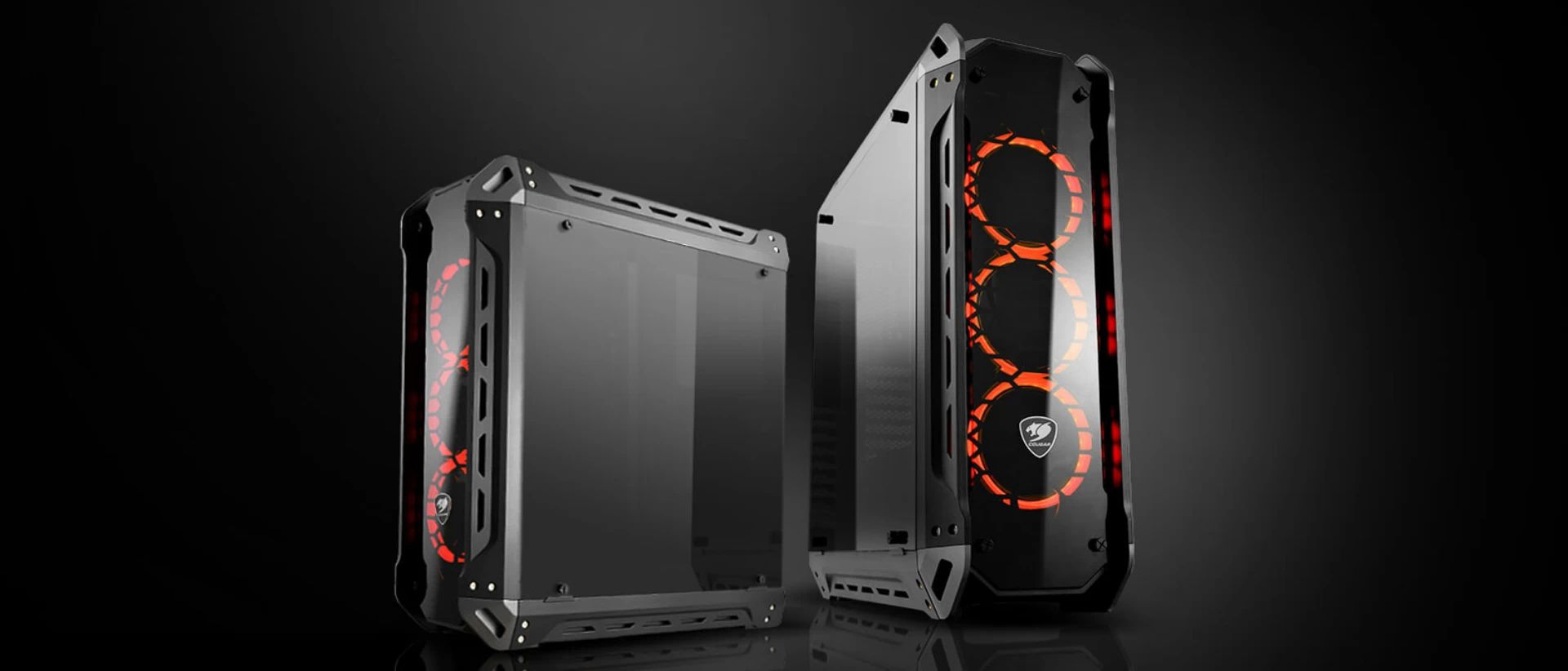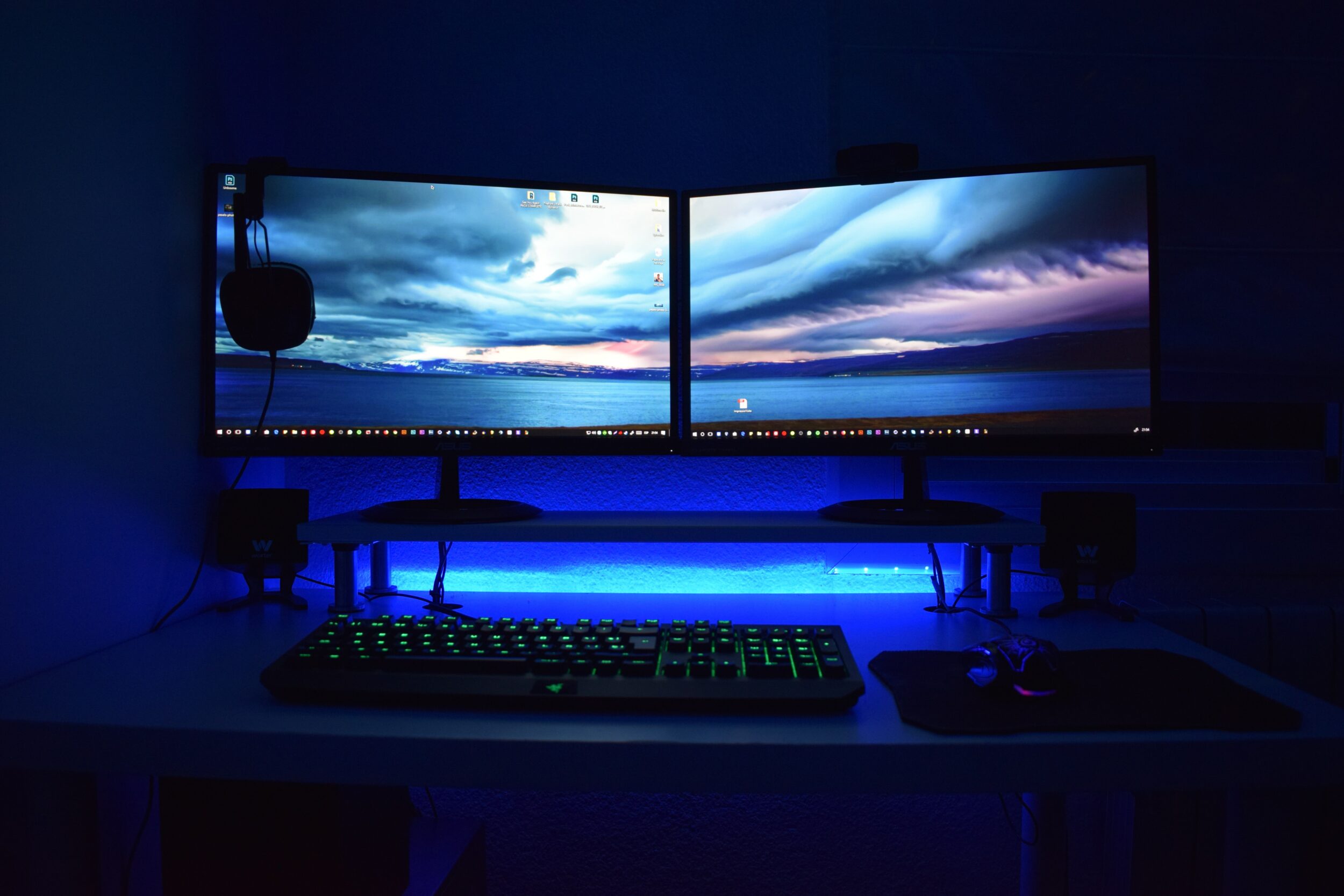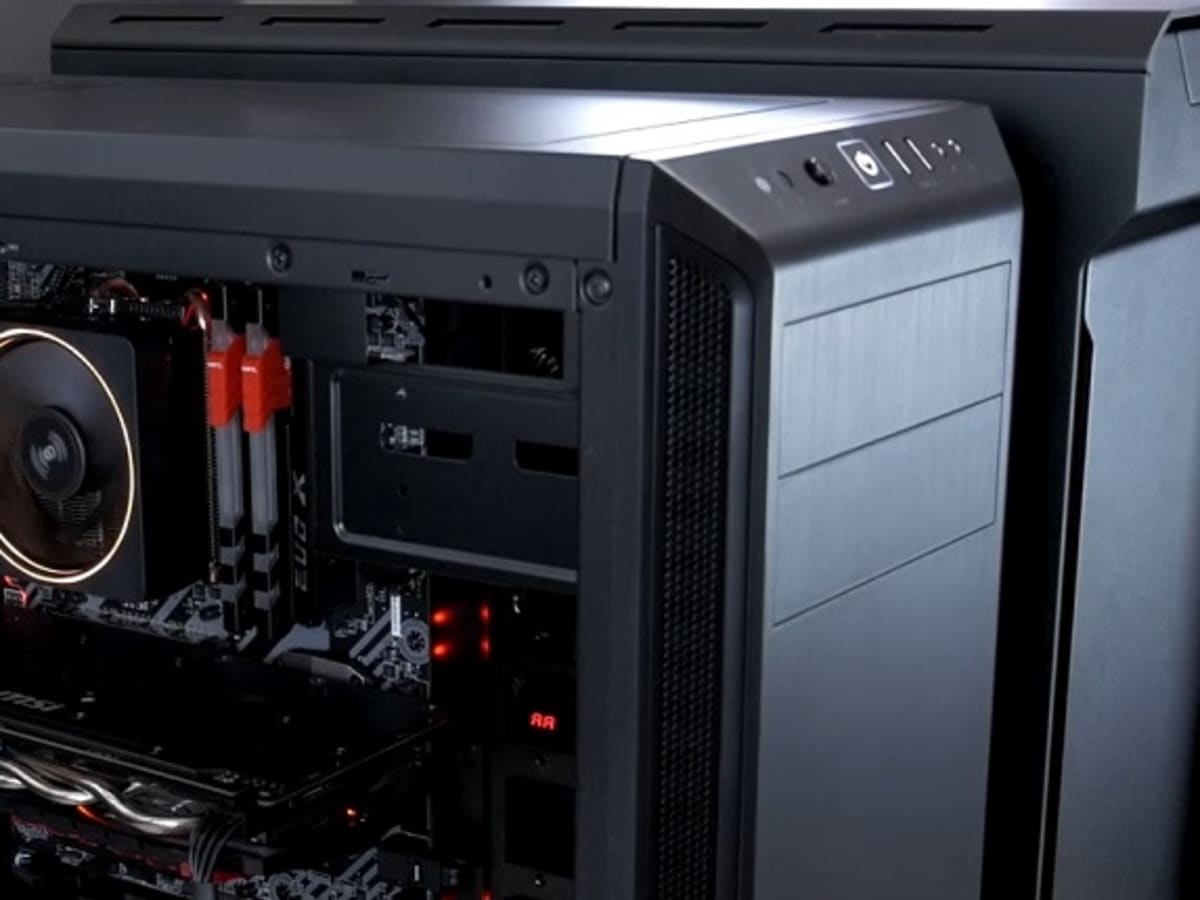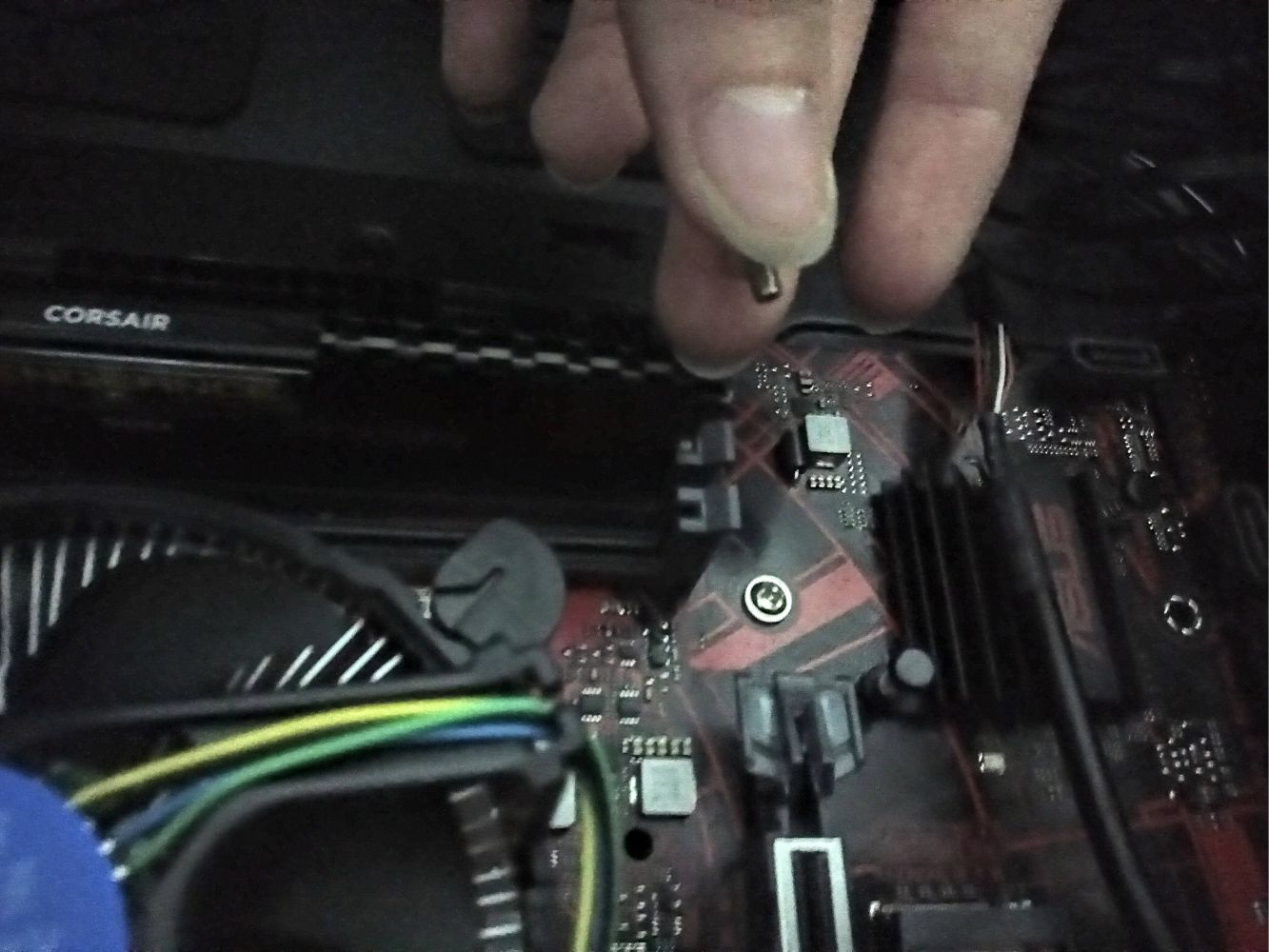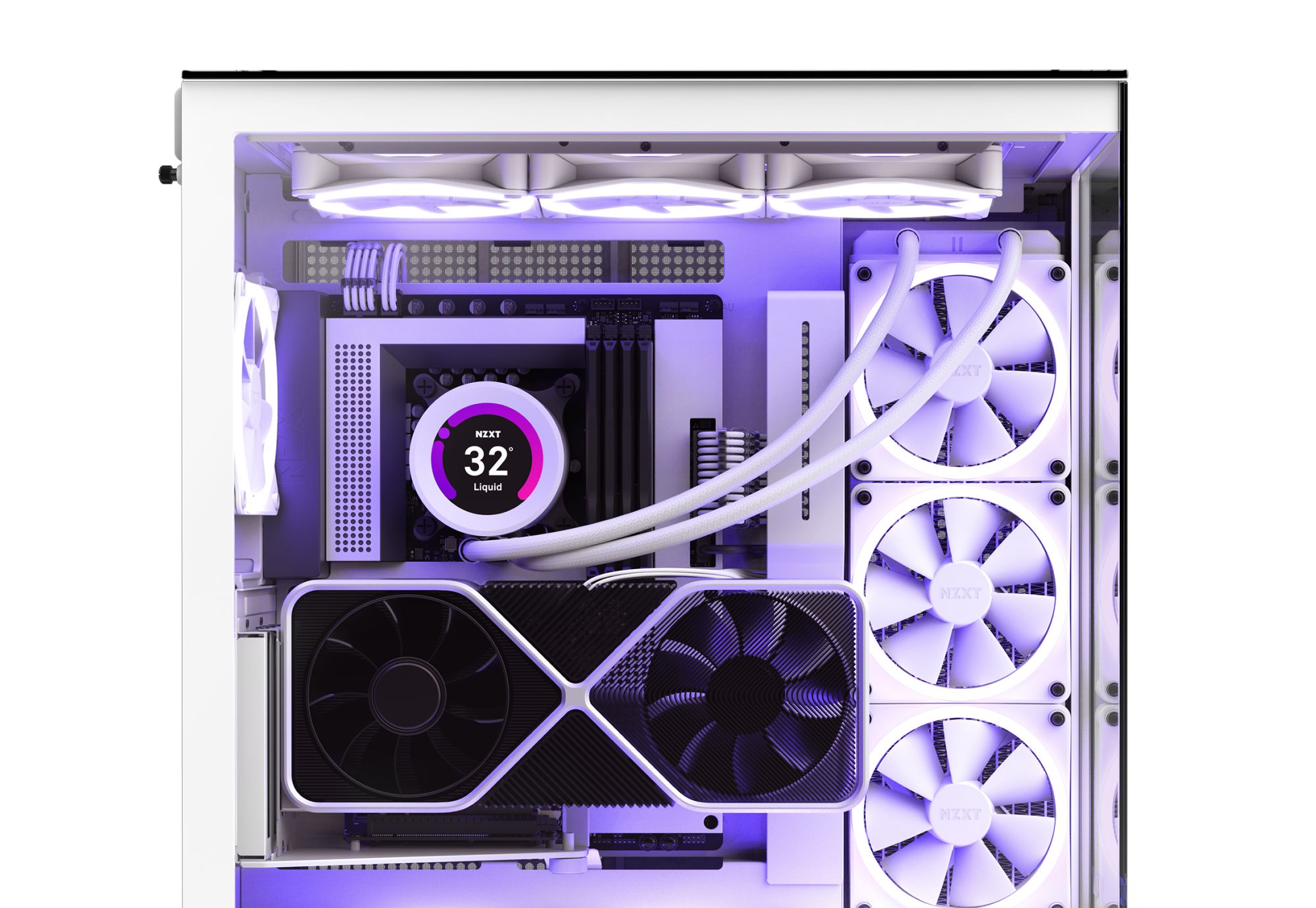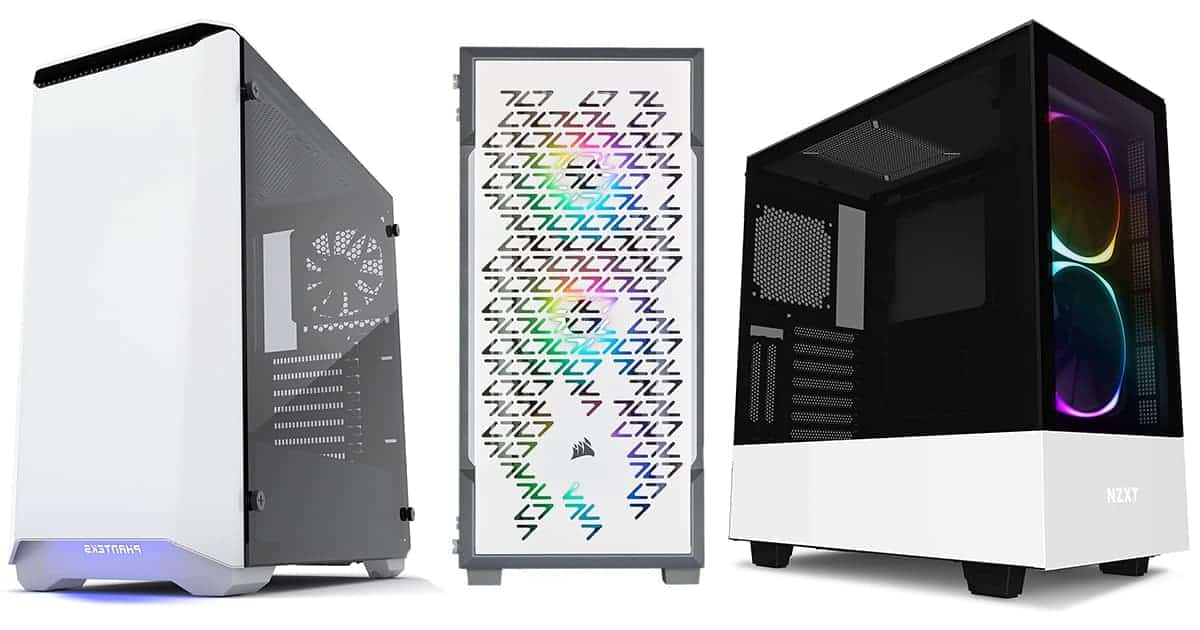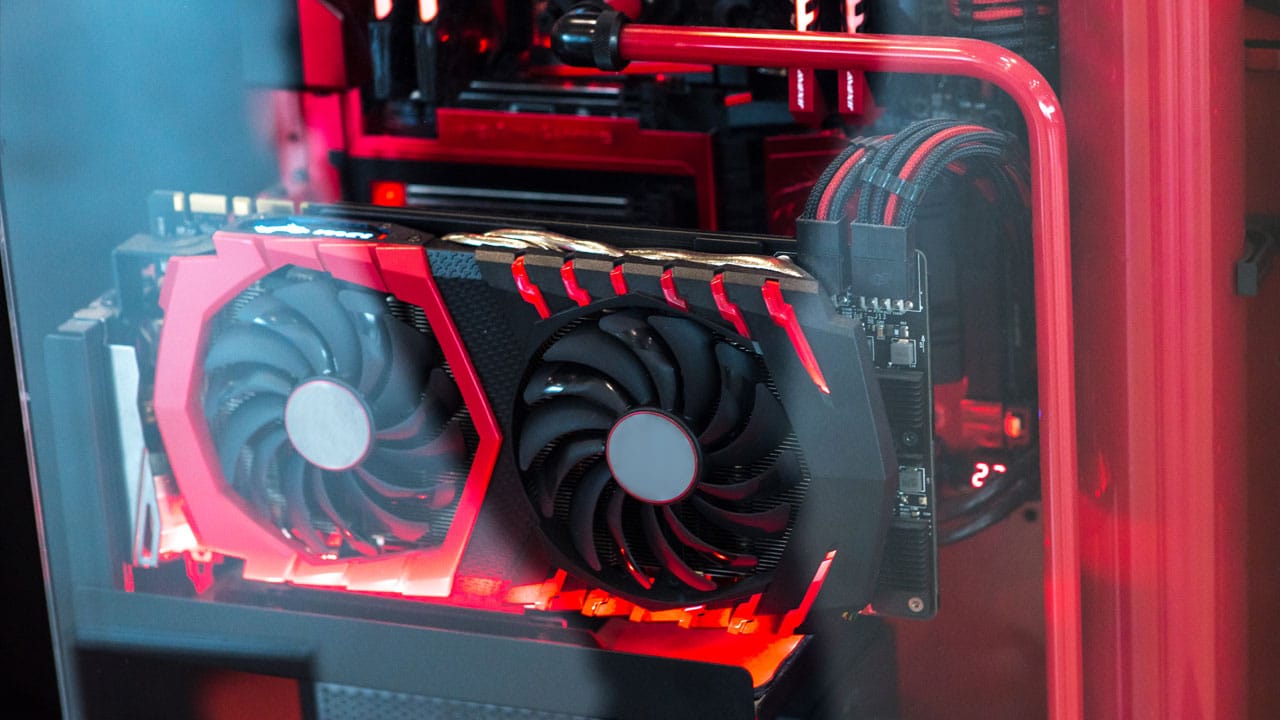Introduction
When it comes to building or upgrading a gaming PC, one of the most important components to consider is the PC case. The case not only houses and protects all the internal components but also plays a crucial role in ensuring proper cooling and optimal performance of the system. However, with so many different PC cases available on the market, it can be challenging to know if a particular case will fit your needs.
In this article, we will discuss the key factors to consider when choosing a PC case and provide you with the know-how to determine if a specific case is compatible with your gaming setup. By understanding these factors and taking measurements of your components, you can save yourself from the frustration of investing in a case that doesn’t fit your needs or restricts your PC’s performance.
From the size and form factor of the case to its cooling options, expansion slots, and storage capabilities, each aspect plays a crucial role in ensuring compatibility with your PC’s components. By carefully considering these factors, you can ensure that your gaming PC has sufficient space for all the necessary hardware and offers proper airflow to prevent overheating.
So, whether you’re planning to build a gaming PC from scratch or upgrade your existing one, read on to discover how to know if your gaming PC case fits your requirements. Let’s dive in!
Factors to Consider when Choosing a PC Case
When selecting a PC case, several factors should be taken into consideration to ensure compatibility and optimal performance for your gaming setup. Let’s explore these essential factors:
Size and Form Factor: The size and form factor of the case play a vital role in determining its compatibility with your components. Common case sizes include ATX, micro-ATX, and mini-ITX. Ensure that your motherboard and other components fit within the selected case’s dimensions.
Cooling Options: Proper cooling is crucial for maintaining your PC’s performance and preventing overheating. Consider the number and size of fan mountings, the space for CPU coolers, and the availability of options for liquid cooling to ensure adequate airflow throughout the case.
Expansion Slots: The number and type of expansion slots in a PC case determine the compatibility with additional components such as graphics cards, sound cards, and networking cards. Ensure that the case has sufficient expansion slots to accommodate your system’s requirements.
Measuring Your Components: Before deciding on a PC case, take precise measurements of your components, including the motherboard, graphics card, and CPU cooler. This will help you choose a case with enough space to fit all your hardware comfortably.
Compatibility with Motherboard: Ensure that the case is compatible with your chosen motherboard’s form factor. ATX, micro-ATX, and mini-ITX are the most common motherboard form factors, so choose a case that matches your motherboard’s specifications.
Sufficient Space for Graphics Card: Gaming PCs often require powerful graphics cards, which can be quite large. Check the maximum GPU length that the case can accommodate to ensure your graphics card fits without any issues.
Adequate Room for CPU Cooler: If you plan to use an aftermarket CPU cooler, make sure the case can accommodate its size. Consider the maximum CPU cooler height that the case supports to avoid any compatibility issues.
Drive Bays and Storage Options: Consider the number and type of drive bays available in the case, such as 2.5″ or 3.5″ drive bays, to ensure adequate storage options for your needs. Additionally, check for options such as SSD mounts or M.2 slots for modern storage solutions.
Cable Management: Look for a case with good cable management options, such as routing holes, tie-down points, and ample space behind the motherboard tray. Proper cable management not only improves aesthetics but also allows for better airflow and easy maintenance.
PSU Space and Placement: Consider the size of the power supply unit (PSU) you plan to use and ensure that the case has sufficient space and proper placement options to accommodate it comfortably. Some cases feature a bottom PSU placement, while others have top-mounted options.
By carefully considering these factors, you can choose the right PC case that not only fits your gaming setup but also allows for optimal performance, adequate cooling, and future expandability.
Size and Form Factor
When selecting a PC case, one of the first considerations is its size and form factor. The size of the case determines how much space it offers for internal components, as well as its overall dimensions. The form factor, on the other hand, refers to the specific motherboard size and layout that the case is designed to accommodate.
There are several common case sizes available, including ATX, micro-ATX, and mini-ITX. ATX is the most popular size and offers ample room for expansion and multiple graphics cards. Micro-ATX is a smaller form factor with fewer expansion slots, making it suitable for compact builds. Lastly, mini-ITX is the smallest form factor, perfect for ultra-compact builds where space is limited.
When choosing a PC case, it’s essential to consider the size and form factor that your components require. The case should be able to accommodate your chosen motherboard’s form factor, ensuring a secure fit and proper alignment of connectors and ports. If you already have a motherboard, check its form factor specification and choose a compatible case accordingly.
Another factor to consider is the dimensions of the case itself. Depending on the available space in your setup, you’ll need to choose a case that fits comfortably on your desk or in your preferred location. Measure the available space and compare it to the dimensions of the case to ensure a suitable fit.
In addition to size and form factor, consider the internal layout of the case. Some larger cases may have removable hard drive cages or modular designs that allow for more flexible component placement. This can be beneficial when you’re dealing with larger components, such as long graphics cards or oversized CPU coolers.
Overall, when choosing a PC case, it’s crucial to consider both the size and form factor to ensure compatibility with your components and the available space in your setup. By selecting the right size and form factor, you can create a well-fitting and visually appealing gaming PC that meets your specific needs.
Cooling Options
When it comes to gaming PCs, effective cooling is paramount to ensure optimal performance and prevent overheating. When choosing a PC case, it’s crucial to consider the cooling options it offers to keep your components running cool and steady under heavy loads.
The first thing to look for is the number and size of fan mountings available in the case. Fans are the primary method of cooling a PC, and having sufficient fan mountings ensures proper airflow throughout the case. Consider the location of the fan mounts, such as front, rear, top, or side, and choose a case that supports the fan configuration you desire.
In addition to fan mountings, some cases also offer options for liquid cooling. Liquid cooling, or water cooling, is an advanced cooling solution that can provide even better thermal performance compared to traditional air cooling. Look for cases with dedicated mounting points for radiators and water blocks, as well as sufficient space for the required tubing and reservoirs.
Another essential aspect of cooling is ventilation. Some cases come with mesh front panels or perforations on the top and sides, enabling better airflow and heat dissipation. Good ventilation helps to draw in fresh air and expel hot air, maintaining a balanced temperature inside the case.
When considering cooling options, it’s also important to account for the size and capabilities of your CPU cooler and graphics card. Some CPU coolers and graphics cards may be larger than standard, requiring more space within the case. Make sure the case can accommodate the size of your chosen cooling solutions without any clearance issues.
Last but not least, don’t forget to consider the cable management options provided by the case. Proper cable management improves airflow by reducing obstructions and allows for a cleaner and more organized build. Look for cases with routing holes, tie-down points, and ample space behind the motherboard tray to easily route and manage your cables.
By carefully considering the cooling options available in a PC case, you can ensure that your components stay cool, stable, and perform at their best. Adequate cooling not only prolongs the lifespan of your hardware but also provides a more comfortable and reliable gaming experience. So, choose a case that offers the cooling options necessary to meet the demands of your gaming setup.
Expansion Slots
Expansion slots play a crucial role in the compatibility and expandability of your gaming PC. These slots allow you to install additional components, such as graphics cards, sound cards, networking cards, and more. When choosing a PC case, it’s important to consider the number and type of expansion slots it offers to ensure it can accommodate your future upgrade plans.
The most common type of expansion slot is the PCI Express (PCIe) slot. These slots come in different versions, such as PCIe x16, PCIe x4, and PCIe x1, with each variant offering different bandwidth and capabilities. The PCIe x16 slots are primarily used for graphics cards, while the other slots can be utilized for various expansion cards.
Ensure that the case has enough PCIe slots to accommodate your desired expansion cards. If you plan to have multiple graphics cards or other expansion cards, make sure the case has sufficient space between the slots to allow for proper airflow and avoid any interference.
Aside from PCIe slots, some cases also offer additional expansion options, such as M.2 slots for faster storage solutions or USB ports for easy connectivity. These expansion options can be beneficial in enhancing the functionality and versatility of your gaming PC.
Before purchasing a PC case, consider the expansion needs of your gaming setup. Determine the number and type of expansion cards you plan to install in the future. This will help you select a case that provides enough expansion slots to accommodate your requirements.
Furthermore, it’s important to ensure that the case’s expansion slots are compatible with the size and dimensions of your chosen components. Graphics cards, in particular, can vary in length, and it’s crucial to ensure that there is enough clearance in the case to accommodate your desired graphics card without any physical or thermal conflicts.
By considering the expansion slots offered by a PC case, you can ensure that your gaming PC is ready for future upgrades and expansions. Choose a case with sufficient expansion options to accommodate your needs and allow for seamless integration of additional components as your gaming requirements evolve.
Measuring Your Components
Accurate measurements of your components are essential when selecting a PC case to ensure a proper fit and compatibility with your hardware. Before making a purchase, take the time to measure the dimensions of your motherboard, graphics card, CPU cooler, and other components to ensure they will fit comfortably inside the case.
Start by measuring the motherboard. Different form factors, such as ATX, micro-ATX, and mini-ITX, have specific dimensions that may require different case sizes. Measure the length and width of your motherboard, including any protruding connectors or heatsinks, and compare these measurements with the specifications provided by the case manufacturer.
Next, measure the length of your graphics card. This is especially important if you have a larger graphics card or plan to install multiple graphics cards in an SLI or Crossfire configuration. Make sure the case has enough clearance to accommodate the length of your graphics card without any physical or thermal conflicts.
If you’re using an aftermarket CPU cooler, measure its height. Some CPU coolers can be tall and may require additional clearance inside the case. Ensure that the case can accommodate the height of your chosen CPU cooler without hindering the closing of the side panel or interfering with other components.
Additionally, consider the dimensions of your storage drives. Measure the length and width of your hard drives or solid-state drives to ensure that the case has sufficient drive bays or mounting options to accommodate them.
Furthermore, it’s worth noting any additional components or peripherals you plan to install, such as fan controllers, sound cards, or optical drives. Measure their dimensions and consider the available expansion slots and drive bays in the case to ensure proper integration and compatibility.
Having precise measurements of your components will help you select a PC case that can comfortably house all your hardware. Pay attention to the dimensions provided by the case manufacturer and compare them to your measurements to ensure a proper fit without any potential issues.
By taking the time to measure your components accurately, you can confidently choose a PC case that provides a perfect fit for your gaming setup, ensuring optimal performance, proper airflow, and efficient cable management.
Checking Compatibility with Motherboard
When selecting a PC case, one of the most critical factors to consider is its compatibility with your chosen motherboard. Ensuring that the case can accommodate your motherboard’s form factor and has the necessary features and connectors is vital for a successful build.
The first step is to determine the form factor of your motherboard. Common form factors include ATX, micro-ATX, and mini-ITX. Each form factor has specific dimensions and mounting hole placements that need to align with the corresponding features in the case.
Check the specifications provided by the case manufacturer to identify which form factors the case supports. Make sure that the case is designed to fit your motherboard’s form factor, providing the necessary mounting points and connectors for a secure and reliable installation.
Next, consider the orientation of the motherboard inside the case. Some cases feature a standard ATX layout, where the motherboard is mounted with the I/O panel facing the rear of the case. Others may have a reversed layout, known as a “inverted” or “reverse ATX” case design. Ensure that the case’s orientation matches your preference and aligns with your motherboard’s I/O connectors.
Another aspect to check is the placement of the standoff holes on the case’s motherboard tray. Standoff holes are small raised metal mounts that keep the motherboard elevated and secured inside the case. These holes should align precisely with the mounting holes on your motherboard.
In addition to form factor compatibility, verify that the case provides sufficient connectivity options for your motherboard. Check for the presence of front panel connectors, such as USB ports, audio jacks, and any other specific ports required by your motherboard or peripherals.
Lastly, consider the additional features and design elements of the case that can facilitate the installation and maintenance of your motherboard. Look for features like cable management options, removable or modular drive cages, and easy-access panels that make working with the motherboard more convenient.
By carefully checking the compatibility of the PC case with your motherboard, you can ensure a smooth and hassle-free building process. Take the time to review the case manufacturer’s specifications and compare them with your motherboard’s form factor, orientation, and connectivity requirements to select a case that accommodates your motherboard perfectly.
Ensuring Sufficient Space for Graphics Card
One of the key components in a gaming PC is the graphics card, and it’s essential to ensure that the PC case can accommodate the size and specifications of your chosen GPU. Ensuring sufficient space for the graphics card is crucial not only for a proper fit but also for proper airflow and preventing any potential conflicts with other components.
The first step is to check the length of your graphics card. High-performance graphics cards can vary in length, with some models exceeding 300mm or more. Measure the length of your graphics card, including any added cooling solutions, and compare it to the specifications provided by the case manufacturer.
Make sure that the case has adequate clearance to fit your graphics card without any issues. It’s important to consider the extra space required for connecting cables, such as power connectors and display outputs, as well as any additional cooling solutions, such as large heatsinks or fans installed on the graphics card.
In addition to length, also consider the width and height of your graphics card. Some graphics cards may be wider or taller than others due to added cooling solutions or custom cooling designs. Check that the case can accommodate the width and height of your graphics card without any obstructions or clearance issues.
Furthermore, examine the number of PCIe slots available in the case. Graphics cards generally require the use of one or more PCIe slots, depending on their size and number of cooling fans. Ensure that the case has enough available slots to accommodate your graphics card, as well as any other expansion cards you may need.
Lastly, consider the airflow and cooling options in the case. A powerful graphics card can generate a significant amount of heat, and it’s important to ensure that the case has proper airflow to keep it cool. Look for cases with strategically placed intake and exhaust fans, as well as options for additional fan or liquid cooling setups.
By ensuring sufficient space for your graphics card, you can prevent any compatibility issues and ensure optimal performance from your PC. Take accurate measurements of your graphics card and compare them to the specifications provided by the case manufacturer to select a case that can house your graphics card with ease and efficiency.
Determining Adequate Room for CPU Cooler
The CPU cooler is an essential component for keeping your processor cool and ensuring optimal performance. When choosing a PC case, it’s important to determine whether it provides sufficient room to accommodate your CPU cooler. Adequate space for the CPU cooler ensures proper installation, optimal airflow, and compatibility with other components.
The first consideration is the height of your CPU cooler. Measure the height of your chosen CPU cooler, including any additional cooling fans or heat pipes, and compare it to the maximum CPU cooler height supported by the case. The case specifications should indicate the maximum height allowable for CPU coolers.
Allow for some additional clearance above the CPU cooler to ensure unimpeded airflow and better compatibility with other components, such as the side panel of the case. It’s recommended to leave a few extra millimeters of space to avoid any potential issues.
In addition to height clearance, consider the width and length of the CPU cooler. Some aftermarket CPU coolers can be larger in size and may extend beyond the boundaries of the CPU socket. Verify that the case has enough space to accommodate the width and length of your chosen CPU cooler without any physical or thermal interference.
Also, pay attention to the orientation of the CPU cooler. Some CPU coolers, like tower coolers, have a vertical orientation which may require additional clearance in the case, while others, like low-profile coolers, have a horizontal orientation and may interfere with other components if not properly accounted for.
Consider the airflow design of the case and the placement of fans. Ensure that the CPU cooler has sufficient space and clearance to function optimally with the case’s existing airflow configuration. Placement of the CPU cooler should allow for proper intake and exhaust of air, as well as efficient dissipation of heat.
By determining adequate room for your CPU cooler, you can ensure a proper fit, efficient cooling, and compatibility with other components in your PC. Carefully measure the dimensions of your CPU cooler and compare them to the specifications provided by the case manufacturer to select a case that can accommodate your chosen CPU cooler with ease.
Checking Drive Bays and Storage Options
Storage is an important consideration when choosing a PC case, as it determines the number and type of drives that you can install in your system. Whether you rely on traditional hard drives or prefer faster solid-state drives (SSDs), ensuring that the PC case has appropriate drive bays and storage options is crucial for accommodating your storage needs.
First, consider the type of drives you plan to use. Traditional hard drives come in a 3.5″ form factor, while solid-state drives can be either 2.5″ or the more modern M.2 form factor. Check the number of 3.5″ and 2.5″ drive bays available in the case to ensure it can accommodate your desired storage configuration.
Next, examine the design and layout of the drive bays. Some drive bays are fixed, while others are removable or modular, allowing for flexible configurations. Removable drive bays offer easier installation and maintenance by allowing you to install or replace drives outside of the case.
Consider the maximum number of drives that the case can support, not just in terms of physical space, but also in terms of available connectors and SATA ports on your motherboard. Ensure that you have enough available connections to connect all your drives without any constraints.
If you plan to use M.2 SSDs, check if the case has dedicated M.2 slots or mounting options available. These small, compact drives can be attached directly to the motherboard without the need for drive bays, saving valuable space inside the case.
Additionally, check for any specific features that can enhance your storage options. Some cases offer drive cages that can be repositioned or removed, creating more space for larger components or additional cooling solutions. Others may provide built-in hot-swappable drive bays for convenient drive access and swapping.
Also, consider the cable management options for your drives. Look for cases with routing holes, tie-down points, and ample space behind the motherboard tray to manage the drive cables effectively. Proper cable management not only improves airflow but also makes future maintenance and upgrades much easier.
By carefully checking the drive bays and storage options in a PC case, you can ensure that it can accommodate your preferred storage configuration. Consider the number and type of drives you plan to use, as well as any specific features or requirements, to select a case that provides ample storage space and efficient organization for your gaming PC.
Considering Cable Management
Cable management is a crucial aspect to consider when choosing a PC case. Proper cable management not only improves the aesthetics of your build but also plays a significant role in airflow, cooling, and overall system performance. By keeping your cables organized and neatly routed, you can ensure better airflow, easier maintenance, and a more visually appealing build.
First, look for a case that offers good cable management options. This includes features such as routing holes, tie-down points, and ample space behind the motherboard tray. Routing holes allow you to pass cables through designated areas, keeping them hidden from view and avoiding tangling. Tie-down points provide places to secure and organize your cables, preventing them from obstructing airflow or getting in the way during maintenance.
Proper cable management not only improves aesthetic appeal but also has a direct impact on cooling. Clear cable routing paths help to maintain unobstructed airflow, preventing hotspots and ensuring that cool air reaches critical components. This can have a positive impact on the overall temperature of your system, contributing to better performance and longevity of your hardware.
When managing cables, it’s important to group and organize them properly. Group cables based on their type and purpose, such as power cables, data cables, and fan cables. Using cable ties, Velcro straps, or cable sleeves can help keep these groups organized and prevent them from interfering with each other. Additionally, make sure to route cables away from fans and other moving parts to avoid any potential damage.
Another consideration is the length of your cables and the available space in the case. Ensuring that your cables are long enough to reach their respective components without strain or tension is essential. Similarly, having enough room behind the motherboard tray to accommodate excess cable length makes cable management much easier.
Lastly, don’t forget about the aesthetics of cable management. Tangled and messy cables can detract from the overall look of your build. Neatly routed and properly organized cables can give your PC a clean and professional appearance. It’s worth investing the time to achieve a well-managed cable layout, as it can enhance the overall visual impact of your build.
By considering cable management when choosing a PC case and properly organizing and routing your cables, you can improve airflow, cooling, system performance, and the overall aesthetic appeal of your gaming PC. Choose a case with good cable management options, and take the time to route and organize your cables neatly and efficiently for the best results.
Assessing the PSU Space and Placement
When selecting a PC case, it’s essential to assess the power supply unit (PSU) space and placement to ensure compatibility with your preferred PSU and to optimize cable management and airflow within your build. Evaluating the PSU space and placement in a case is crucial for a successful and efficient PC build.
Start by considering the form factor of your PSU. Standard ATX PSUs are the most common, but there are also smaller form factors available, such as SFX and TFX. Check the compatibility of your PSU’s form factor with the case you’re considering and ensure that there is ample space to accommodate the dimensions of your chosen PSU.
Review the power supply mounting options provided by the case. Cases typically offer either a top-mounted or bottom-mounted PSU configuration. Top-mounted PSUs are more common and usually have a dedicated PSU shroud or cover to hide the PSU cables and improve aesthetics. Bottom-mounted PSUs, on the other hand, can facilitate better airflow as hot air tends to rise naturally.
Consider the available clearance between the PSU and other components. The case should provide sufficient space for the PSU to be installed without obstructing other components or cables. Ensure that there is enough room for cable connections and that there are no clearance issues with larger components, such as graphics cards or CPU coolers.
Another aspect to consider is cable management in relation to the PSU. Look for cases that provide ample space behind the motherboard tray and offer routing holes or tie-down points to facilitate proper cable management. This allows you to route and hide PSU cables neatly, improving the overall aesthetics, airflow, and maintenance of your build.
Additionally, determine the PSU’s intake and exhaust mechanism. Some cases have a PSU intake located at the bottom of the case, with a separate dust filter. This design allows the PSU to draw fresh air from outside the case. In contrast, other cases have the PSU intake facing inward, relying on internal case airflow to cool the PSU. Consider your case’s airflow configuration and preferences when assessing the PSU intake design.
Lastly, evaluate the PSU’s wattage and efficiency rating. Ensure that the PSU you choose has enough wattage to power your components and provide the necessary headroom for future upgrades. Additionally, look for PSUs with higher efficiency ratings, such as 80 Plus Gold or Platinum certified, to ensure a more energy-efficient and reliable system.
By assessing the PSU space and placement in a PC case, you can ensure compatibility with your chosen PSU, optimize cable management, and improve airflow within your build. Carefully review the case’s PSU specifications, form factor compatibility, mounting options, clearance, and cable management features to select a case that suits your PSU requirements and enhances the overall efficiency and reliability of your gaming PC.
Final Thoughts
Choosing the right PC case for your gaming setup is crucial for compatibility, performance, and overall satisfaction with your build. By considering factors such as size and form factor, cooling options, expansion slots, measuring your components, compatibility with your motherboard, space for the graphics card and CPU cooler, drive bays and storage options, cable management, and PSU space and placement, you can ensure a successful and well-optimized build.
Remember to thoroughly research and compare different PC cases, paying attention to their specifications and features. Take accurate measurements of your components and consider future upgrade possibilities. Prioritize factors such as adequate cooling, expandability, cable management options, and compatibility to create a functional, efficient, and visually appealing gaming PC.
Additionally, consider your budget and personal preferences when selecting a PC case. There are a wide variety of cases available, ranging from budget-friendly options to high-end, feature-rich cases. Determine the features and specifications that are most important to you and choose a case that meets your requirements without breaking the bank.
Finally, it’s always a good idea to read reviews and seek recommendations from trusted sources to gather insights about a particular PC case. Learning from others’ experiences can provide valuable information and help you make an informed decision.
With careful consideration of these factors and proper selection of a PC case, you can build a gaming PC that not only performs flawlessly but also exudes a sleek and professional appearance. So, take your time, do your research, and choose a PC case that will be the perfect foundation for your gaming rig.







